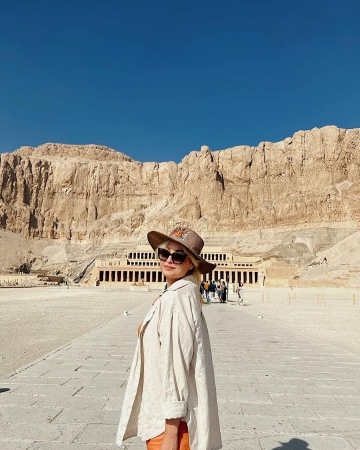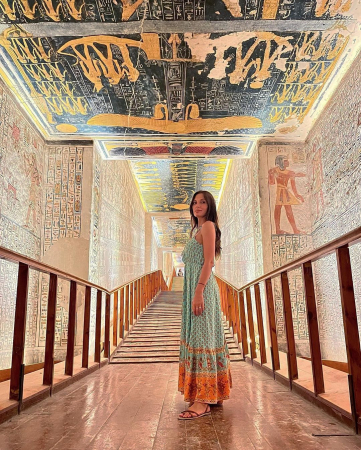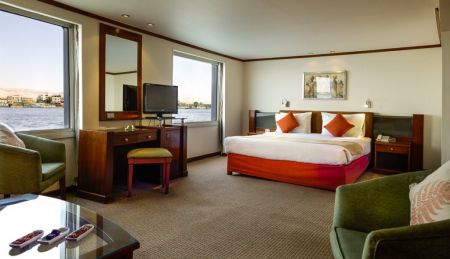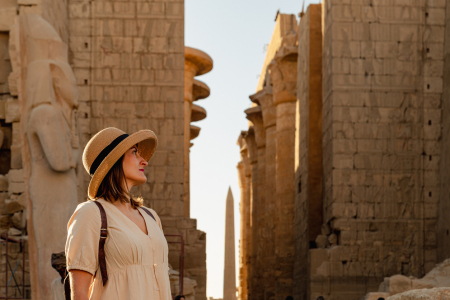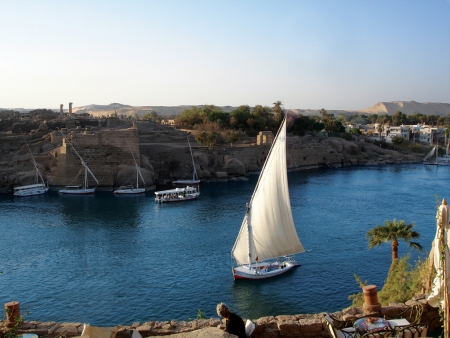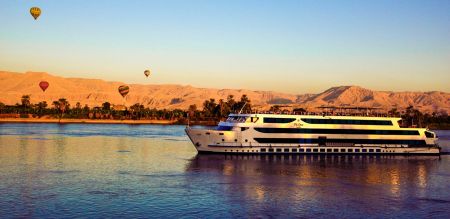Luxor City Egypt (Attractions and Things to Do)
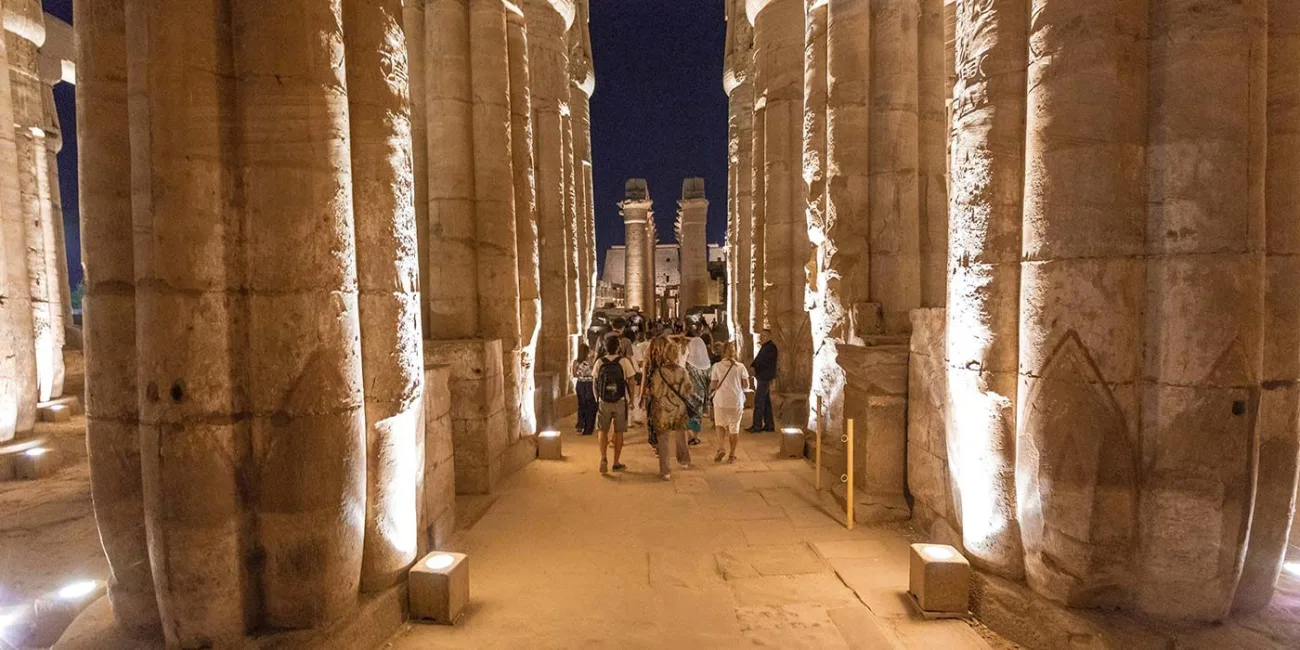
Topics covered:
- General information about Luxor
- Luxor City History
- Avenue of Sphinx
- Sights of East and West bank
General information
Luxor is the most well-known recognized City in Upper (Southern) Egypt and the capital of Luxor Governorate, known famously for its oldest and most Ancient Egyptian sites. Originally called ‘Thebes’ in ancient Egypt, Luxor is often known also as the ‘World's greatest open-air Museum’. The ruins of the early Temples of Karnak and Luxor stand within the modern city on the East Bank and life goes on unchanged for centuries amongst the local inhabitants. Luxor City lies between the East and West bank of the River Nile and is crossed daily by locals and tourists alike with Felucca boats and Ferries alike. Many monuments, tombs, and temples are located on the West Bank which includes the Valley of the Kings and Valley of the Queens attracting millions of tourists worldwide arriving annually to partake in this famous pilgrimage in Egyptian ancient civilization. Many travelers include Luxor in their Egypt tours, as it’s one of the most essential stops in the country.
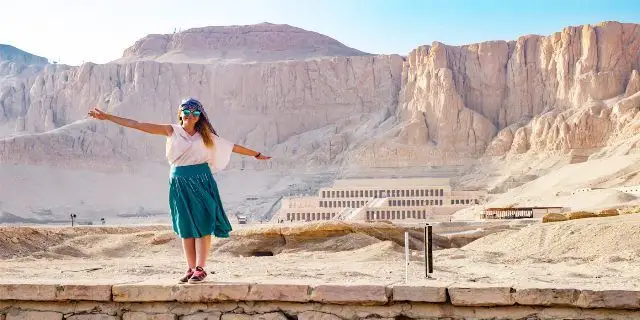
Luxor City History
Luxor (Thebes), was the capital of Egypt during the Dynasty of the New King Kingdom and was considered the ‘Glorious city’ of the god Amon-Ra.
From the 11th Dynasty, Luxor grew from a small town into a thriving city, renowned for its high social status, and luxury, and also as a center for wisdom, art, religious and political hierarchy. In a short time, the city became a hub of wealth, rising in prominence, not just in Egypt but worldwide. Luxor (Thebes) played a huge part in disbanding and eliminating the invading forces of the Hyksos in Upper Egypt, creating it as a major center and force regarding political, religious, and military control starting from the 18th Dynasty right through to the 20th Dynasty.
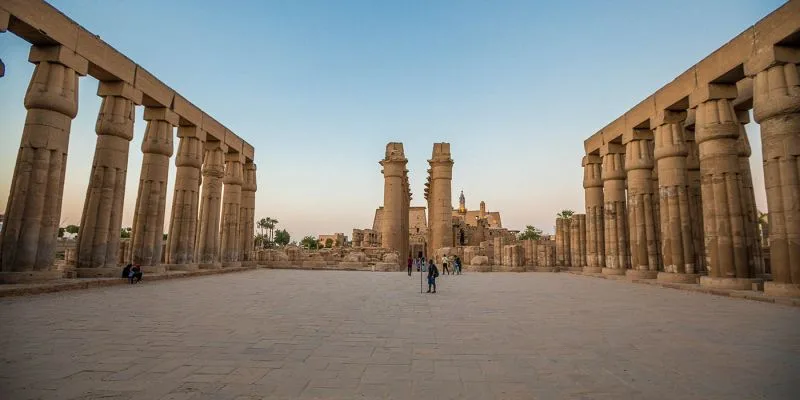
It remained the religious capital of Egypt until the later Greek period. Luxor worshipped the God Amon, worshipped together with his wife, the Goddess Mut, and their son Khonsu, known as the God of the Moon. Due to Thebes (Luxor) rising as the foremost central focus and city in Egypt, the God Amon rose in importance and worship and became linked to the sun God Ra, creating the new 'King of Gods' Amon-Ra. His vast temple, at Karnak north of Thebes, stood as the most important temple of Egypt until the end of antiquity.
It remained the religious capital of Egypt until the later Greek period. Luxor worshipped the God Amon, worshipped together with his wife, the Goddess Mut, and their son Khonsu, known as the God of the Moon
Due to Thebes (Luxor) rising as the foremost central focus and city in Egypt, the God Amon rose in importance and worship and became linked to the sun God Ra, creating the new 'King of Gods' Amon-Ra. His vast temple, at Karnak north of Thebes, stood as the most important temple of Egypt until the end of antiquity.
Customize Your Dream Vacation!
Get in touch with our local experts for an unforgettable journey.
Plan Your TripAvenue of Sphinx
Currently, as of 2014, the continued project to complete the original ‘Avenue of Sphinx’ is ongoing. This when completed, will allow tourists to walk between Karnak and Luxor Temples, the project being to unearth and restore the 2.7 kilometers long Avenue of Sphinxes that once linked the two Temples. The ancient road was constructed by the pharaoh Amenhotep III and was finally formed under Nectanebo I in 400 BCE. Incredibly, over one thousand Sphinx statues lined the road currently being excavated which was covered by churches, silt, homes, and mosques.
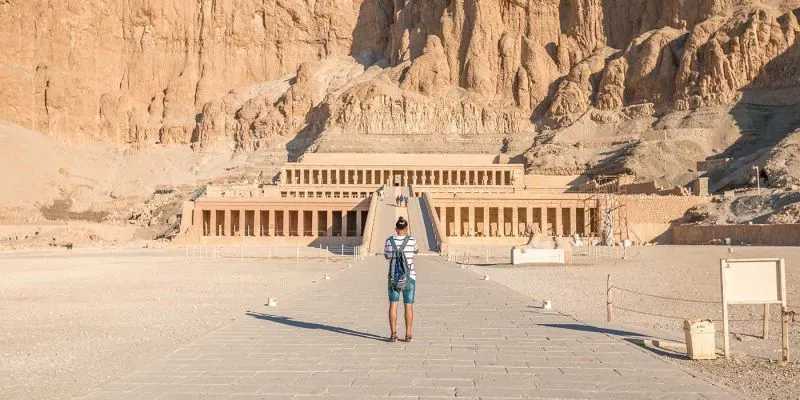
Luxor and the East Bank
Many visitors reach Luxor via Nile cruises, which allow for a seamless and scenic journey between Egypt’s most famous archaeological sites.
Valley of the Kings
The astonishing landscape of the Valley of the Kings with its sand dunes that stretch almost to the waters-edge of the Nile opposite Luxor to the high mountains is matched only by the treasures the area has hidden for centuries, and may still even hide.
Deir el-Medina Tomb, West Bank, LuxorMany tombs have been discovered, such as those of Tut Ankh Amon (Tutankhamun), Ramses I, Ramses II, Ramses III and Ramses VI, Amenhotep II, Seti I, Sipteh, Thutmose III andHoremheb, and their treasures displayed in museums such as the Egyptian Museum in Cairo or in the Luxor Museum, but you can’t help but wonder what other fascinating riches are hidden underground just waiting to be discovered. Over 60 tombs and chambers are known to be in the valley, but as excavations continue and more tombs are found it is believed there could be many more.
Of course, the pharaohs who chose the site as their graveyard and had astonishing tombs built way underground thought the strategy would stop robbers from removing the priceless treasures that were buried with them when they died. They believed in the afterlife and by burying their possessions with them they would everything they needed, materially, when they entered their new life. Sadly, most of the tombs were robbed over time, with only a few having been discovered intact. The most notable of these is the tomb of Tutankhamun.
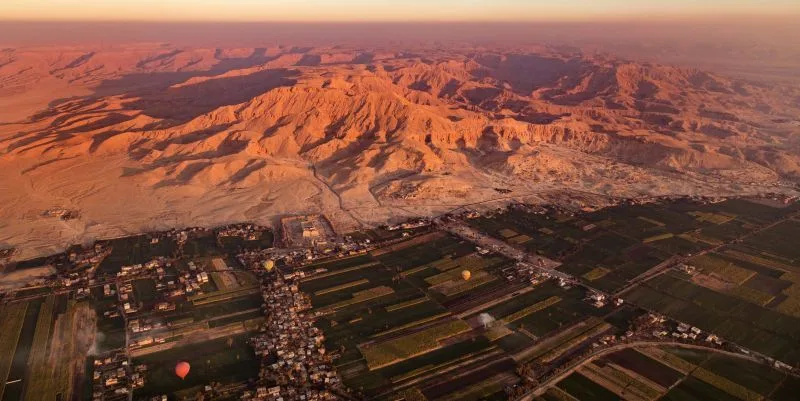
The Valley of the Kings dates back to around the 16th to the 11th centuries BC as a necropolis of the Pharaonic Egypt’s New Kingdom dynasties. It is believed to have been used for around 500 years, and is the resting place of the kings and other nobles of the 18th through to the 21st dynasties. In 1979 it was made a World Heritage Site and remains one of the most important and famous archaeological sites in the world.
If visiting the Valley of the Kings from Luxor you will cross the bridge over the Nile and pass by the villages of New and Old Gurna (Qurna), which gives a fascinating glimpse into how local residents have lived and farmed their land for centuries. Old Gurna, particularly, has a collection of brightly painted mud houses that have stood for years. Some are today used as alabaster factories.
The Valley of the Kings, itself, though is intriguing. Following the remote road through the valley (wadi) to the entrance, you will past barren sand dunes and hills. You then reach an interesting information centre from where you can hop on a small train provided for visitors that eases the sun-scorched walk to the first of the tombs enormously, and then you are at the heart of the valley. It is here that most of the more significant tombs are located.
To the right is the tomb of Tutankhamun, numbered KV62, and almost everyone who visits the valley will wish to enter the boy pharaoh’s last resting place. The tomb was discovered in November 1922 by British archaeologist Howard Carter, who spent days, months, years in his search for the tomb. Carter’s small domed house where he lived during this time can still be seen as you journey to the valley.
When Carter found steps leading to the tomb and then an antechamber full of gold and ivory treasures it caused worldwide excitement.
He then went on to find a sealed door which, when opened, contained the outer sarcophagus of Tutankhamun. He was buried in coffins one inside the other. Some were solid gold, others wood with gold. The treasures are now contained in the Egyptian Museum in Cairo, and include the sarcophaguses, jewellery, smaller sarcophaguses for his organs that would have been removed during the mummification process and the iconic gold death mask that is the image of ancient Egypt.
The tomb, itself, is quite small and decorated, but the tombs of other pharaohs, like Ramses I and Ramses III, for example, are highly decorated and colourful. These lie to the left of Tutankhamun’s tomb.
You enter by stairways that lead down past extraordinary wall paintings and hieroglyphics. The colours yellow, orange and red feature strongly, and are so bright it is hard to imagine that they were drawn so many centuries ago.
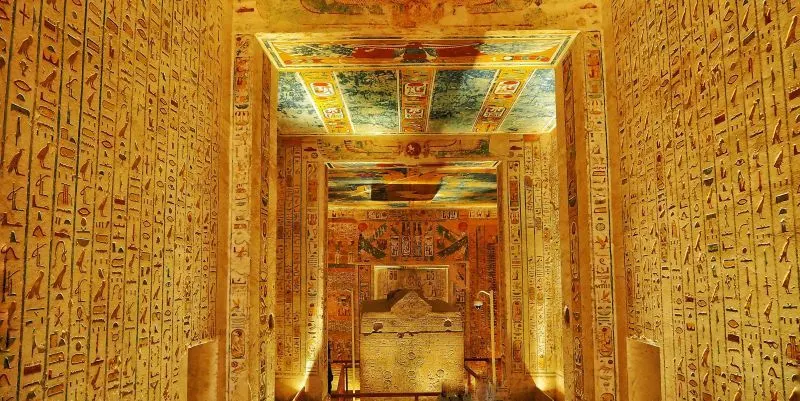
The Valley of the Kings dates back to around the 16th to the 11th centuries BC as a necropolis of the Pharaonic Egypt’s New Kingdom dynasties. It is believed to have been used for around 500 years, and is the resting place of the kings and other nobles of the 18th through to the 21st dynasties. In 1979 it was made a World Heritage Site and remains one of the most important and famous archaeological sites in the world.
If visiting the Valley of the Kings from Luxor you will cross the bridge over the Nile and pass by the villages of New and Old Gurna (Qurna), which gives a fascinating glimpse into how local residents have lived and farmed their land for centuries. Old Gurna, particularly, has a collection of brightly painted mud houses that have stood for years. Some are today used as alabaster factories.
The Valley of the Kings, itself, though is intriguing. Following the remote road through the valley (wadi) to the entrance, you will past barren sand dunes and hills. You then reach an interesting information centre from where you can hop on a small train provided for visitors that eases the sun-scorched walk to the first of the tombs enormously, and then you are at the heart of the valley. It is here that most of the more significant tombs are located.
To the right is the tomb of Tutankhamun, numbered KV62, and almost everyone who visits the valley will wish to enter the boy pharaoh’s last resting place. The tomb was discovered in November 1922 by British archaeologist Howard Carter, who spent days, months, years in his search for the tomb. Carter’s small domed house where he lived during this time can still be seen as you journey to the valley.
When Carter found steps leading to the tomb and then an antechamber full of gold and ivory treasures it caused worldwide excitement.
He then went on to find a sealed door which, when opened, contained the outer sarcophagus of Tutankhamun. He was buried in coffins one inside the other. Some were solid gold, others wood with gold. The treasures are now contained in the Egyptian Museum in Cairo, and include the sarcophaguses, jewellery, smaller sarcophaguses for his organs that would have been removed during the mummification process and the iconic gold death mask that is the image of ancient Egypt.
The tomb, itself, is quite small and ndecorated, but the tombs of other pharaohs, like Ramses I and Ramses III, for example, are highly decorated and colourful. These lie to the left of Tutankhamun’s tomb.
You enter by stairways that lead down past extraordinary wall paintings and hieroglyphics. The colours yellow, orange and red feature strongly, and are so bright it is hard to imagine that they were drawn so many centuries ago.
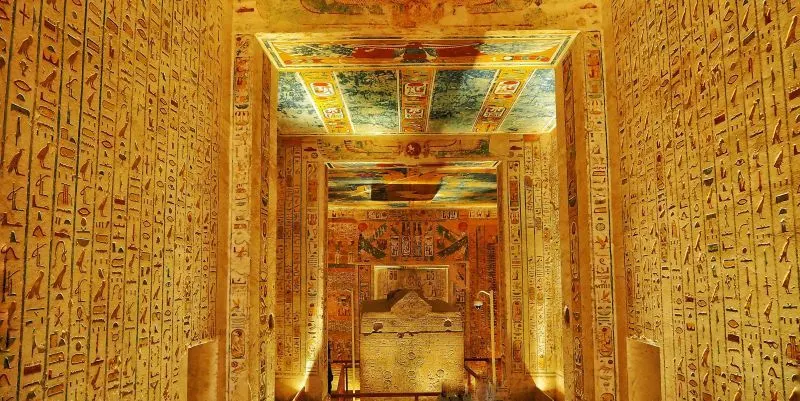
The Tomb of Ramses I (KV16), the second pharaoh of the 19th dynasty, is particularly enchanting, as is the Tomb of Ramses III (KV11), which was discovered in the 18th century. It is known as The Harper’s Tomb after drawings depicting musicians were found
inside. It is sometimes known as Bruce’s Tomb too, after the man, James Bruce, who discovered it.
Hatshepsut TempleAnother tomb, that of the Pharaoh Akhenre Setepenre Siptah (KV47) of the 19th dynasty, is one of the longest in the Valley of the Kings, however his mummy was oddly discovered in the tomb of Amenhotep II (KV35) in 1898.
A visit to the Valley of the Kings is an absolute must on any agenda, and the fact that it is so easily accessible from Luxor city centre where there is a good choice of hotel accommodation makes a family excursion straightforward. Tickets include visits to many tombs, although King Tutankhamun’s is extra. Many guided tours include a visit to the nearby Valley of the Queens too, and perhaps even the Valley of the Nobles, which lies just to the south of the Valley of the Kings and contains hundreds of tombs of high officials of the day. Nearby, too, is Deir El-Madina, where there are the tombs of artisans and workmen who worked on the kings’ tombs. It dates from the Ptolemic era.
Luxor and the East Bank
To say Luxor is one of the world’s greatest cities is nothing less than an understatement. It is, in fact, one of its most astonishing, if not singularly the best, outdoor museum anywhere on the planet and offers visitors the chance of seeing almost a third of all the ancient antiquities known to man in just a few kilometres. The temples and structures that have stood for thousands of years are beautifully preserved.
Home to the city of Thebes, the ancient capital of Egypt during the Pharaonic New Kingdom period, along with the fabulous Karnak Temples, Luxor Temple and the necropolis of the Valley of the Kings and the Valley of the Queens, Luxor can trace its history back to unimaginable times. It actually has three distinct areas, the city centre on the East Bank of the Nile, Karnak which is a town in its own right and lies just to the north and Thebes, location of the Valley of the Kings.
The city is said to have gained importance as early as around 2000 BC under the rule of the 11th dynasty. In ancient times it was known as Waset, a name that indicated its power, and later Thebes under the Greeks.
Luxor Temple and the Nile cornicheHomer is said to have described Luxor as the ‘City of the Hundred Gates’. It was, for a great many years, one of the most important cities in the world, and certainly at the centre of political, economic, religious and military life of Ancient Egypt.
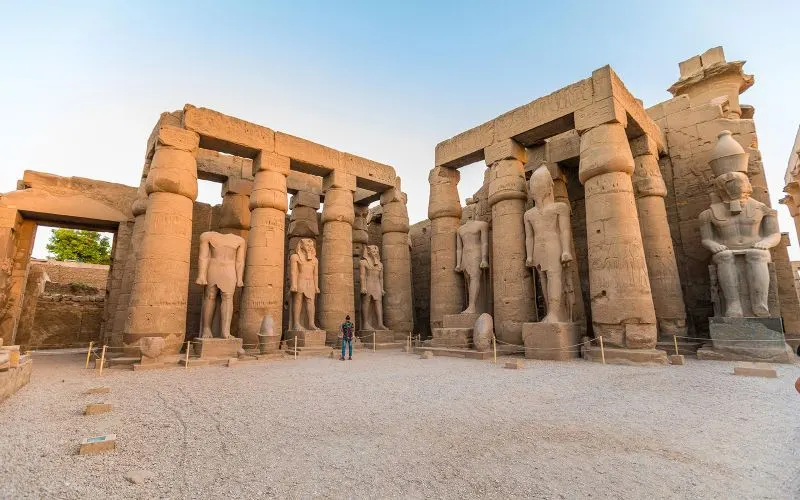
The Luxor of today is a compact city, running lengthways along the banks of the Nile and bordered by the desert. Its population stands at around 380,000 with a regular stream of international visitors increasing this figure during the spring and autumn months when the temperature is at a pleasing level for sightseeing. Temperatures of 31-40°C (107.6°F) in June to August are not uncommon.
Luxor’s size makes it easy to navigate. It’s a short hop of 20 minutes or so from the Luxor International Airport into the city centre, which largely only comprises three main roads. The corniche, a pretty tree-lined boulevard that runs along the banks of the Nile in an esplanade fashion, is central for all the city’s attractions. It is home to the Winter Palace Hotel, now run by the hotel group Sofitel, that was where Agatha Christie is said to have penned her classic work ‘Death on the Nile’.
The two other main roads are the street al-Mahatta in which lies the train station, and the street al-Karnak that runs from the Karnak Temple into town past the Luxor Temple. For visitors, the size and layout of Luxor mean that all the sites are within a short distance of each other and easy to find.
Getting across from the East Bank or city centre to the West Bank to visit the Valley of the Kings and the Valley of the Queens is now straightforward by road with the opening of a bridge ten years ago. It’s just a few kilometers upstream. Before the bridge opened it was very much a case of hopping on one of the frequent and inexpensive ferries or motorboats that ran, and still do run, across the Nile. There’s a landing just opposite the Luxor Temple.
It’s a great way to cross the river. Visitors have a wealth of opportunities to sightsee in Luxor.
There are the two big attractions of the Luxor Temple and the Karnak Temples, of course, plus the fabulous Luxor Museum and the Mummification Museum.
The Luxor Temple is an astonishing sight from the corniche. It is particularly attractive when subtlety lit in the evening. Dating from the time of Amenhotep II and Ramses II, it is dedicated to the god Amon Ra and his wife Mut. You enter it from an entrance facing north, at the point where at one time it would have been connected to the Karnak Temples via a causeway. The causeway, which is currently being restored and is set to be a highlight of Luxor, would have been lined with sphinx statues. A later addition was a long road, a dromos, built by Nectanebo I in the 30th dynasty. Sadly, most of the sphinxes have disappeared over the years, but a few exceptionally good examples still exist close to the temple today.
Built during the New Kingdom, the temple is entered past a huge pylon built by Ramses II, with two of the original six statues representing the king on either side. There is also the remaining one of two matching 25-metre high granite obelisks. The other is erected in the Place de la Concorde in Paris, and a much loved and photographed landmark.
Inside, there are courtyards, columns and fabulous colonnades, one a hundred metres in length and built byAmenhotep III. Its columns are topped with carvings of the papyrus plant. Along the way there are inscriptions, scenes from ancient Egypt and even Roman stuccoes that can be seen partially covering ancient Egyptian hieroglyphics. On the outer wall of the pylon are inscriptions that tell of the battle between Ramses II and Hittites. The temple is a glorious celebration of the power of the pharaohs of the New Kingdom and a ‘must see’ sight.
Medinet Habu, Ramses III TempleHeading out of the Luxor Temple towards the next ‘must see’ sight,the Karnak Temples, you will reach the Luxor Museum on the corniche. Be sure to go inside.
Quite modern in appearance, it was founded in 1975 to house antiquities dating from the ancient civilizations of the area found in more recent times, including some of the Tutankhamun treasures. While the Egyptian Museum in Cairo displays ancient artefacts to perfection, it is quite moving to see such extraordinary items exhibited in Luxor, the city where they were found.
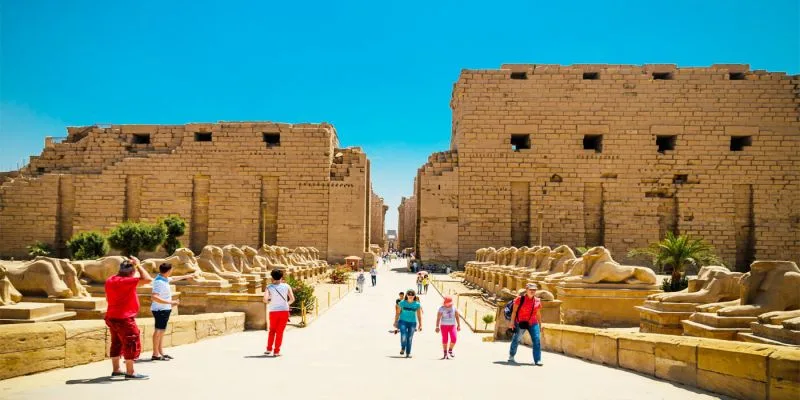
The Karnak Temples barely need an introduction, they are so famous. The largest ancient religious site in the world, the complex takes its name from the village of Al-Karnak and comprises three distinct temples.
The largest, the Precinct of Amun-Re, is ancient and dedicated to the god Amon. It is the only area open to the public. There is also the Precinct of Montu, the Precinct of Mut, and a now dismantled building, the Temple of Amenhotep IV. The triad of Luxor is Amun, Mut, and Khonsu.
The site dates from as far back as 2000 BC and although the building would have been low-key in the beginning it is said that around 30 pharaohs added buildings, temples, chapels, and architectural wonders to it for about 2,000 years from the Middle Kingdom right through to Ptolemaic times. The result is a fabulous treasure trove of ancient buildings and structures, columns, courtyards, pylons and obelisks, and even a sacred lake, the scale of which is unparalleled anywhere in the world.
At the entrance, you pass over what is believed to have been a canal connected to the Nile, complete with an ancient dock. Sadly, there is little remaining on the dock today. The entrance road, dromos, is lined with a row of statues on either side and is known as the Avenue of Rams. The statues represent Amon and are beautifully preserved. Once inside the building be sure to see the huge statue of Ramses II, one of the iconic images of the Karnak Temples.
Other major sights to see on the East Bank of Luxor including the Mummification Museum, which is located right on the corniche. It has a huge sign outside and is easy to find. Inside, there’s a graphic display of how the ancient Egyptians would mummify not only humans but also crocodiles, of which there were plenty in the Nile, household pets, and even fish. All are exhibited in mummified form, including the body of Masaharta, a High Priest of Amun in Thebes around 1050 BC.
In the museum, you can also see examples of the tools used to remove bodies’ vital organs and drain fluids, and replace voids with salt, plus artifacts like embalming fluid, canopic jars, and coffins. Like the Cairo Mummification Museum inside the Egyptian Museum, this is a fascinating place but not one for the faint-hearted.
Look out also for the oldest mosque in Luxor, the El-Mekashkesh Mosque, which is said to contain the remains of a 10th-century Islamic saint, several churches, and the great Coptic basilica next to Luxor Temple. For a leisurely way to see Luxor from the river, take a felucca,
which is a wooden sailing boat, or one of the motorboats that can be seen making their way up or downstream at most times of the day. The landing stages along the East Bank are the starting point for many of the cruise ships that run to and from Aswan too.
Luxor, the West BankOn the West Bank, the Valley of the Kings, the Valley of the Queens, and the Valley of the Nobles, plus many other fabulous temples and structures can be seen. Look out for the Madinet Habu Temple, which includes temples to Amenhotep I and Ramses III, the two huge statues known as the Colossi of Memnon, the funerary temple of Ramesseum, and the landmark temple to the great female pharaoh Hatshepsut, the elegant building known as the Temple of Queen Hatshepsut at Deir El Bahari.
Carved into the sheer limestone rock face, the beautiful temple has three floors and a long sweep of steps, and a walkway as its entrance.
The Luxor of today
The Luxor of today is a compact city, running lengthways along the banks of the Nile and bordered by the desert. Its population stands at around 380,000 with a regular stream of international visitors increasing this figure during the spring and autumn months when the temperature is at a pleasing level for sightseeing. Temperatures of 31-40°C (107.6°F) in June to August are not uncommon.
Luxor is a favorite destination for travelers booking Egypt tours, especially those interested in immersing themselves in the wonders of ancient civilization.
The two other main roads are the street al-Mahatta in which lies the train station, and the street al-Karnak that runs from the Karnak Temple into town past the Luxor Temple. For visitors, the size and layout of Luxor mean that all the sites are within a short distance of each other and easy to find.
Many who arrive on Nile cruises spend several days exploring Luxor’s East and West Banks, captivated by its temples, tombs, and timeless scenery.

